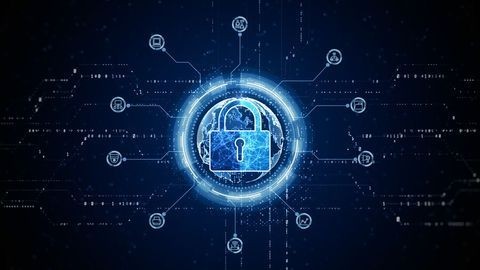An App Store Set Up This Way Won’t Keep The Plaintiffs Away: Six Antitrust Takeaways from Last Week’s Apple v. Pepper Decision
Client Alert | 12 min read | 05.23.19
On its face, last Monday’s Supreme Court decision in Apple v. Pepper does not radically change the law. Applying its existing precedent, the Supreme Court affirmed the Ninth Circuit Court of Appeal’s ruling and held that a group of iPhone owners did directly buy apps from Apple (rather than app developers) and thus could sue Apple for federal antitrust violations. But a deeper dive reveals six important takeaways for forward-looking businesses.
- The Illinois Brick rule still stands. It remains true that only those who buy directly from an alleged antitrust offender can sue for monetary damages under federal antitrust law, as set forth in the Supreme Court’s 1977 Illinois Brick decision.
- State law continues to be different. In most states, there is no analog to the Illinois Brick rule—indirect purchasers can sue for damages under state antitrust law. Apple v. Pepper did not change this.
- This decision may not impact e-commerce as broadly as some think it will. Because Apple’s App Store shares some similarities with other online platforms such as Airbnb, eBay, and Uber, some have suggested that Apple v. Pepper will broadly affect e-commerce. But the App Store is different than many online platforms in important ways that may limit the reach of the ruling.
- The dissent tried to create doubt about the injunctive relief exception to Illinois Brick. Courts have long held that lawsuits solely seeking injunctive relief under federal antitrust law fall outside of the Illinois Brick rule because they don’t present the same policy concerns as cases seeking monetary damages. But the dissent tried to cast some doubt on this exception.
- The case merits continued monitoring. The Supreme Court did not rule on the substance of the iPhone owners’ claims—only whether they had the right to bring those claims. The case is now headed back to the trial court for proceedings that may provide further guidance on how courts will look at online platforms like Apple’s App Store.
- Substance matters over form. Though they disagreed on the particulars, the justices in the majority and dissent agreed that in principle, antitrust law should not allow contract formalities to overcome economic realities.
The Underlying Facts and Law
The opinion is the latest chapter in a long-running dispute involving Apple’s App Store. Apple set up its technological ecosystem so that the App Store is the only way for app developers to distribute and iPhone owners to download iPhone apps, with limited exceptions that are not relevant here. To sell their apps in the App Store, app developers must pay Apple a $99 annual fee, agree to pick a price for their apps ending with $.99, and pay Apple a 30% commission on every app sold. In 2011, a group of iPhone owners filed a class action against Apple. They alleged that by setting up its ecosystem this way, Apple is monopolizing the market for iPhone apps, which in turn raises the price of all iPhone apps in violation of federal antitrust law.
Last week’s Supreme Court opinion in the case revolved around a rule established in the Supreme Court’s 1977 decision in Illinois Brick Co. v. Illinois. There, the Court limited the right to sue for antitrust violations to “direct purchasers.” It held that an “indirect purchasing” plaintiff—a plaintiff who is one or more transactions removed from a party who was overcharged by the alleged antitrust offender directly—can’t sue the alleged antitrust offender for “passed-on” damages under federal antitrust law. Instead, only those who buy directly from the would-be defendant can sue.
Citing this Illinois Brick rule, Apple asked the trial court to dismiss the iPhone owners’ antitrust claims. Apple argued that even though iPhone owners purchase apps through the App Store, they should be viewed as indirect purchasers—their direct purchase is from app developers. At the Court of Appeals, Apple compared the App Store to a mall leasing space to retailers (here, app developers), who then directly sold their goods (apps) to mall-goers (iPhone owners). Apple also noted that, within the confines of Apple’s $.99 requirement, app developers—not Apple—set app prices. The iPhone owners countered by arguing that they buy apps directly from Apple and thus could sue Apple under Illinois Brick. The trial court agreed with Apple and dismissed the lawsuit at the pleading stage, but the Court of Appeals agreed with the iPhone owners and reversed the trial court. The Supreme Court then took up the issue on a writ of certiorari.
The Court’s Decision
The Supreme Court ruled 5-4 in favor of the iPhone owners and held that under Illinois Brick, the iPhone owners were direct purchasers who could sue Apple under federal antitrust law. The case will now be remanded to the trial court to proceed beyond the pleading stage.
The majority opinion—interestingly, authored by Justice Kavanaugh and joined by Justices Ginsburg, Breyer, Sotomayor, and Kagan—frames this as a “straightforward conclusion”: iPhone owners buy apps from Apple’s App Store, so they are direct purchasers from the alleged antitrust offender and can sue Apple for related federal antitrust violations under Illinois Brick. To reach this conclusion, the majority looked to the relevant statute, which authorizes “any person” injured by an antitrust law violation to sue, and to its previous decisions applying Illinois Brick. The majority distinguished the facts in Apple v. Pepper from the facts in Illinois Brick, where the plaintiffs were end-consumers at the bottom of a complicated vertical distribution chain. Apple argued that because each app’s developer sets the app’s price, consumers are really purchasing from those developers while Apple merely provides the platform to do so. But in the majority’s eyes, the nature of Apple’s relationship with app developers is irrelevant. The majority presented two hypotheticals to illustrate this point. In the first scenario, a retailer buys a product from a manufacturer for $6 and resells it to consumers for $10, netting $4 in the process. In the second scenario, the retailer doesn’t buy the product at all, but instead agrees with the manufacturer to sell the product to consumers for $10 and keep 40% of the sales price as a sales commission—again netting $4 while the manufacturer gets $6. For the manufacturer, retailer, and consumer, the bottom line is the same in both scenarios. But under Apple’s argument (as characterized by the majority), the retailer could be sued under federal antitrust law only in the first scenario. The majority saw this is as improperly elevating contractual form over economic substance, potentially leading individuals and companies to make choices about their conduct based on concerns about antitrust liability, rather than their best business judgment.
Justice Gorsuch wrote a dissent joined by Chief Justice Roberts and Justices Thomas and Alito. The dissent argues that the district court correctly applied Illinois Brick when it dismissed the iPhone owners’ antitrust claims. In the dissent’s view, Illinois Brick limits the right to sue for antitrust violations to those that first feel the impact of an overcharge and that here that was the app developers, not iPhone owners. The dissent notes that each app developer gets to decide if she wants to raise her app prices in response to Apple’s 30% commission and pass-on some or all of that charge to iPhone owners. Viewed this way, iPhone owners are just the sort of indirect purchasers that Illinois Brick intended to bar from bringing antitrust claims, and calculating the passed-on overcharges (given the estimated 2 million apps available through the App Store) would entail the very kind of imponderably complicated damage calculations that Illinois Brick sought to preclude. Like the majority, the dissent characterizes the opposing arguments as an effort to elevate form over substance. In the dissent’s eyes, the majority opinion violates long-standing legal principles of proximate cause, which in this context seeks to limit antitrust liability to those actions that are sufficiently close to the cause of the related damage.
The majority responded to this argument in a portion of its opinion that may prove to be quite consequential. The opinion states that the case did not involve “pass-on” overcharges at all, but instead two distinct types of competitive harm, both of which flow from Apple’s restrictions on app distribution: (1) harm to app developers, whose costs are raised by Apple’s 30% commission and who suffer lost profits due to lower sales volume and (2) harm to consumers, who ultimately pay a higher price for apps than what they would have if Apple allowed app developers to directly distribute apps to iPhone owners outside of the App Store platform.
The Impact and Implications: Six Takeaways.
There are six important takeaways from the Court’s opinion.
1. Illinois Brick Remains Intact—For Now.
Apple v. Pepper is most notable for what it did not do: overrule Illinois Brick. In 1977, the Supreme Court said it created the Illinois Brick rule to avoid two potential problems: (1) duplicative damages, where an antitrust violator pays more than once for the same unlawful conduct and (2) complex calculations, where courts and litigants have to navigate complicated and at-times uncertain math to decide how much an antitrust violator must pay to various plaintiffs along a chain of distribution. But in the decades since, neither scenario has materialized as a real problem in states that allow indirect purchasers to sue under state antitrust laws. This has led many to conclude that Illinois Brick should be outright overturned. Indeed, in Apple v. Pepper, thirty-one states filed a friend-of-the-court brief asking for just that. But the Court did not go that route.
Nonetheless, Illinois Brick may not be safe for long. During oral argument in Apple v. Pepper, several justices offered support for overruling the rule even though neither party asked for this. The majority did not ultimately do so, but its opinion does limit the reach of Illinois Brick in situations sufficiently similar to the facts of Apple v. Pepper. Even the dissent—which argues for the application of Illinois Brick to bar the iPhone owners’ lawsuit—acknowledges that the rule may have flaws and might merit being overruled. The dissenters just did not see this case as an appropriate opportunity to re-examine the rule. That was also the view of the Department of Justice, which filed a friend-of-the-court brief supporting Apple. While casting some doubt on the continued wisdom of Illinois Brick, the DOJ reached the same conclusion as the dissenters: this case was not a good vehicle for reconsidering Illinois Brick. Plaintiffs like the iPhone owners may therefore feel encouraged to probe the rule’s limits in the lower courts. Though it may be through this sort of incremental erosion instead of outright demolition, the Illinois Brick wall may continue to fall. At the very least, Apple v. Pepper does appear to signal a trend reversal from expanding to contracting the scope of the rule.
2. State Law Matters.
Although antitrust is often thought of as a federal matter, Apple v. Pepper implicitly highlights the importance of state antitrust law. It remains true that under Illinois Brick only direct purchasers can sue for damages under federal antitrust law. But in the majority of states, there is no such limitation on would-be plaintiffs who sue under state antitrust law. State laws are often interpreted consistent with their federal counterparts, but in this context it is important to understand this distinction when considering possible forums and potential defenses in a case.
3. Apple v. Pepper’s Impact on E-Commerce May Be Overstated.
Apple v. Pepper is the Supreme Court’s latest weigh-in on so-called “two-sided” platforms. Broadly speaking, two-sided platforms are marketplaces that allow two groups to provide each other with the benefits associated with a large network. Well-known examples include Airbnb (real estate owners and renters), eBay (buyers and sellers), Etsy (buyers and sellers), Uber (drivers and passengers), and, of course, Apple’s App Store (app developers and app purchasers).
Two-sided platforms have been all the rage recently. Notably, last year in Ohio v. American Express, the Supreme Court held that American Express’s rules preventing its contracted merchants from steering consumers to use competing credit cards (with lower fees to merchants) did not violate antitrust laws. As part of its decision, the Supreme Court characterized American Express as a “two-sided transaction platform” where sales to one side (merchants) could not be made without simultaneous sales to the other side (cardholders). The Supreme Court held that an antitrust analysis of that kind of platform must consider the impact of alleged conduct on both sides of the platform.
Some see Apple v. Pepper as potentially the next step in the Court’s handling of two-sided platforms after Amex, but there may be important distinctions here. The majority opinion does not explicitly refer to such platforms and neither the majority nor the dissent referenced Amex, even though Apple urged the Court to draw the analogy. But the Court points to a feature of Apple’s App Store common to other two-sided platforms when identifying why the plaintiffs can sue Apple: the plaintiffs paid the platform, not the developers. Not all two-sided platforms are the same, however, and there may be unique features of the App Store that make it different. Structurally, Apple’s App Store platform is not needed to facilitate transactions in the same way that other two-sided platforms are, as is evident from the plaintiffs’ theory that but for Apple’s restrictions, app developers might choose to sell directly to consumers. And the contractual restrictions on developers that are being challenged are much tighter. The takeaways for now are that the Supreme Court’s reading of Illinois Brick may be limited in application to platforms that are closely analogous to Apple’s App Store, but the contours of potential liability for a two-sided platform like the App Store are likely to be litigated further in the future, in this case and elsewhere.
4. The Dissent Tried To Create Doubt About an Illinois Brick Exception.
Through dueling first footnotes in the majority and dissenting opinions, Apple v. Pepper exposed differing views about whether the Illinois Brick rule applies when an antitrust plaintiff just wants non-monetary, injunctive relief—for example, an order requiring a company to change its pricing practices or an order altering contractual terms between a buyer and seller. There has been a well-settled exception to the general Illinois Brick rule: it does not apply when an indirect purchaser only seeks injunctive relief. This exception exists because the policy concerns underlying the Illinois Brick rule are not present when a plaintiff only seeks non-monetary relief: there is no issue of duplicative damages or complicated calculations. In Apple v. Pepper, the majority implicitly suggested its support for the exception, although it did not explicitly comment on the issue because it was not before the Supreme Court. But the dissent sought to cast doubt on the long-standing exception, stating that “it’s hard to make sense of the suggestion that Illinois Brick may not apply to claims for injunctive relief.” These footnotes may lead to future arguments from litigants about the scope of Illinois Brick in cases where a federal antitrust plaintiff sues for injunctive relief only.
5. Stay Tuned for More.
The justices were careful not to weigh in on the merits of the case against Apple—they only addressed the procedural issue of whether the plaintiffs could sue. The case has been sent back to the trial court for further proceedings. But the operative complaint in the lawsuit dates back to 2013. Both sides have likely refined their positions and arguments since then, so it would not be surprising to see them try to reframe their arguments. The plaintiffs, for example, may seek to file an amended complaint. And Apple may once again seek to dismiss their complaint on the merits. If the case proceeds beyond the pleadings, the next stage will involve economic expert disclosures and class certification proceedings. Decisions on the merits may still be some time off and come with their own valuable insights into courts’ treatment of antitrust laws as applied to technology companies. This is likely not the last we have heard of Apple v. Pepper.
6. Companies Should Look To Substance Over Form.
Finally, Apple v. Pepper is notable for the principle that the majority and dissent agree on: substance matters over form. Each side casts the other’s arguments as elevating technicality over reality. In doing so, each side affirmed that the Court thinks antitrust law should be applied in a way that is consistent with economic realities instead of contractual formalities, so that individuals and companies aren’t distorting their business judgment to avoid antitrust liability. The takeaway for businesses and those that advise them is that it is risky to simply try to contract around antitrust liability; good antitrust counsel can instead help analyze substantive legal issues.
Click here to read the Supreme Court’s opinion in Apple v. Pepper.
Contacts
Insights
Client Alert | 13 min read | 10.30.25
Federal and State Regulators Target AI Chatbots and Intimate Imagery
In the first few years following the public launch of generative artificial intelligence (AI) in the autumn of 2022, litigation related to AI focused primarily on claims of copyright infringement. Suits revolved around allegations that the data on which AI models train, and/or the output they produce, infringe upon the intellectual property rights of others. (While some of these cases have settled or reached preliminary judgments, many remain ongoing.)
Client Alert | 3 min read | 10.30.25
Is Course Hero Heading to Summer School After Summary Judgment Loss?
Client Alert | 6 min read | 10.29.25
Enhancing UK cyber security resilience and leadership engagement
Client Alert | 9 min read | 10.28.25
Key Takeaways from a Consequential Month of Russia-Related Sanctions




